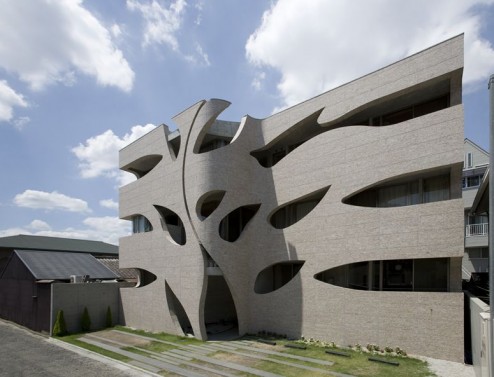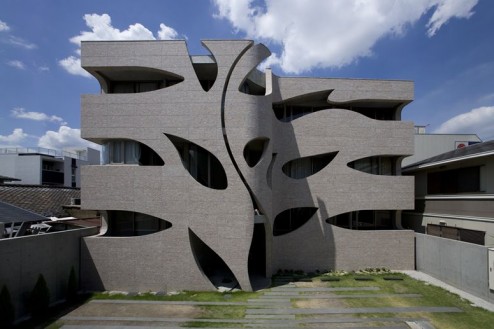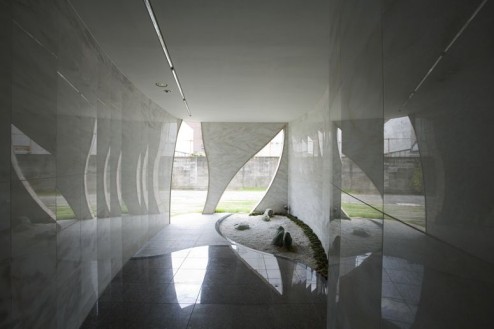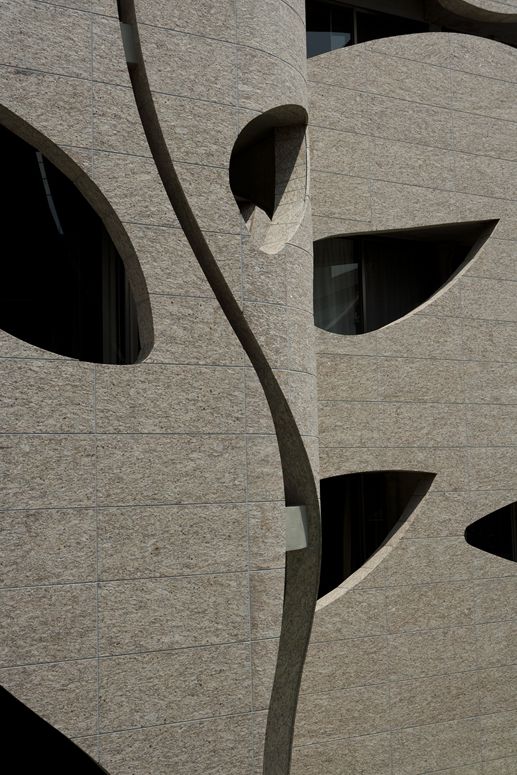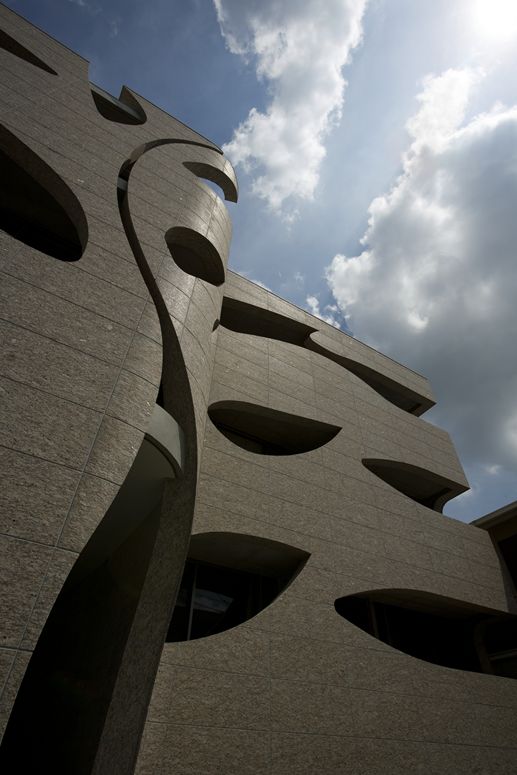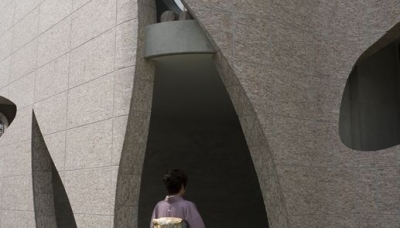Villa Saitan / EASTERN Design Office
The site is in Nishioji-hachijo, Kyoto. From the main street we enter into a covert place along an alley of 4 meters in width.
This construction is a collective housing consisting of 11 units. The impersonality of most segmental housing complexes is completely concealed in this architecture. Instead it is built to be seen as one big house.
The architecture is covered with a wall in which holes are cut. The shape of the holes resembles a trunk, leaves, a root and bulbs. It also can be seen as clouds floating over the trees. The concrete shape which is based on nature turns into a hollow cave: light, and sunbeams filtered through trees.
The idea of windows like sunbeams filtered through trees has developed with the following methods: lined up balconies of average collective housing are completely hidden here, there is no balcony for each room, the ceiling height of one room is raised, dwelling units are elevated one meter from the ground, floor level of entrance and apartments is different, center of the wall surface is curved, the center of the façade of the architecture is sculptured, a curved winding slit is made on the curved wall surface, the shape of the holes matches with the winding slit, the result is one shape of a plant growing roots undulating from it.
This land was once the site of shihachijo-palace, which was the residence of the hero of the Japanese classical tragedy, “Tale of Heike.” It was a stage of the rise and fall of a clan in the 12th century. Such an old and sad memory is cherished and still told among the people of this neighborhood.
The collective housing that is built on such a historical place should not be seen as an average apartment house. Such a notion occurred to us, which might have led us to the idea of an “immortal tree.”
We, therefore, designed a building which does not take vaguely a shape of a tree, but rather an intense and massive form with a hint of movement.
The lot size is 16m×19m. This architecture provides an answer to how to build a low collective housing in a quiet but dense place.
What does the name Saitan mean? Tan is the color of the shrine gates, vermilion. It is also the color of pale red granite stone. Vermilion will not be weathered. It is said that vermillion is a sacred color and it used to be applied on serving dishes and bows and arrows to make them holy. Sai means variety of beautiful colors that make something more attractive.
